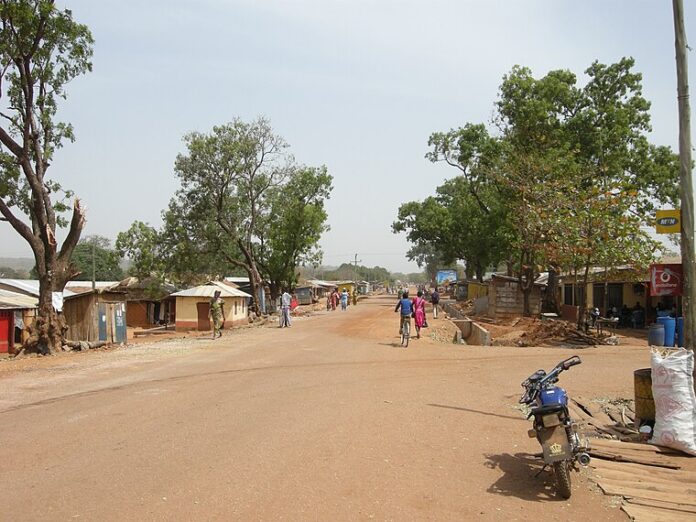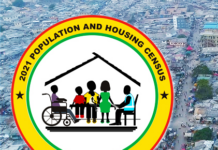
The Ghana Statistical Service’s latest Multidimensional Poverty report has revealed that Savannah Region has the highest proportion of its household population who are multi dimensionally poor recording 49. 5 percent which is about two times higher than the national average of 24. 3 percent.
The report identifies specific areas where the poor are most deprived, allowing for a more precise allocation of resources and better monitoring of development programmes.
What is multidimensional?
Multidimensional is a non –monetary measure of poverty that reflects the various areas in which the population may be deprived of their needs.
Multidimensional poverty captures overlapping deprivations experienced by the poor across 13 non-monetary indicators in four dimensions namely; education, health, living standards and employment.
The Ghana Statistical Service explains that the multidimensional poverty index helps identify deprived individuals and their locations, facilitating targeted policy interventions to improve quality of life.
Key findings
Recent findings of the Multidimensional Poverty report from the Ghana Statistical service has indicated that data from the 2021 population and housing census revealed that, a total of 7.3 million persons, representing 24.3 percent of household population were multidimensionally poor. Among these poor persons, 43.8 percent experienced severe poverty through deprivations in several dimensions.
Regional findings
Elaborating more on the findings, the Director of Social Statistics of the Ghana Statistical Service (GSS) Omar Seidu, said, Savannah region with 49.5 percent has the highest proportion of its household population who are multidimensionally poor; and this is about two times higher than the national average of 24.3 percent.
“ In nine regions, Savanna 49.5 percent, North East 48.1 percent, Upper East 43.0 percent, Oti 40.8 percent, Northern 38.4 percent, Upper West 37. 4 percent, Volta 27.3 percent, Western North 27.0 percent and Western Regions 25.7 percent, more than a quarter of the population have multiple deprivations,” he added.
The Director further explains that the number of multdimensionally poor persons is highest in Ashanti region with 959,031, followed by Northern region with 873,742 and lowest in Ahafo region of 135,644.
Districts ranking
For district ranking, Mr Seidu highlighted that the district with the least proportion who are multidimensioanlly poor is Asokwa Municipal with 6.3 percent in the Ashanti region and the one with the highest is Nabdam district by 68.6 percent in the Upper East region.
He added “three out of the five districts with the highest percent of the population who are multidimensionally poor are in the Savannah region, while four of the districts with the lowest are in the Greater Accra Region.”
Key dimensions of MPI
Out of the four dimensions of the MPI, employment recorded the multidimensional poverty of 32.6 percent followed by living conditions with 27.9 percent, then health by 21.7 percent and education with 17.8 percent.
According to Ormar Seidu, employment and living conditions contribute the highest to multidimensional poverty in most regions ranging 47.8 percent to 12.7 percent and 35.9 percent to 15.5 percent respectively.
He said health and education dimensions contribute the least.
Employment sector
Households with heads in the private informal sector of 21.9 percent are about three times poor more than those in the private formal sector of 7.8 percent and about nine times compared to those in the public sector by 2.4 percent.
Household heads who are not working with 47.7 percent are more than twice multidimensionally poor than those in the private informal sector.
Agricultural sector
According to the report, households headed by those working in the agricultural sector by 34.3 percent are poorer than those in industry and service sectors.
Mr Seidu explains “more than 5.5 times poorer than those in services sector and about 3.8 percent times worse off than those in the industry sector.
Living conditions
Under the living conditions of Ghanaians across the 16 regions, unimproved toilet was the highest with 78.8 percent followed by housing with 36.0 percent, overcrowding by 34.9 percent, cooking fuel 29.1 percent, drinking water by 19. 3 percent, electricity 13.7 percent and assets 13.3 percent.
Educational sector
Four in every ten of the 40.9 percent multidimensionally poor persons have never attended school. According to the report, multidimensional poverty among households whose heads have basic education by 20.0 percent is 12.9 percentage points more compared to those with tertiary education of 7.1 percent.
Rural and urban
Proportions of persons who are multidimensionally poor is higher rural than urban area. According to the Mr Seidu more than a third 36.7 percent of persons living in rural areas are multidimensionally poor and severity of multidimensional poverty is about the same in rural with 44.0 percent and urban with 43.4 percent.
Gender disparities
The report revealed that the incidence of multidimensional poverty among female headed households of 27.0 percent is higher compared to male headed by 23,0 percent.
The Ghana Statistical Service said the insight and data provided in the report are essential in shaping interventions that can effectively reduce poverty and improve the quality of life for Ghanaians.
Source: Ghana/Starrfm.com.gh /Rosemond Akuorkor Adjetey


